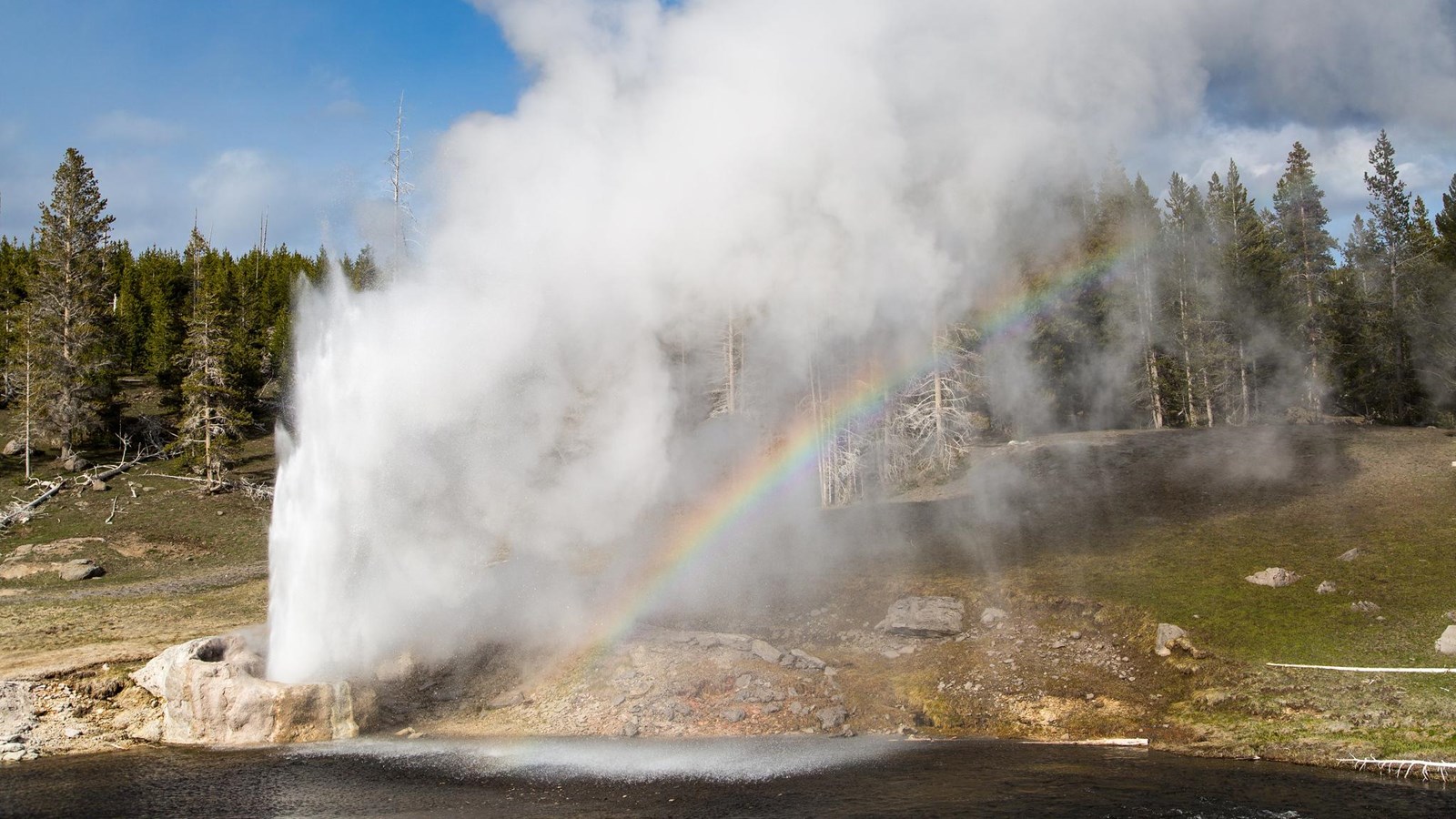Last updated: December 2, 2024
Place
Riverside Geyser

NPS / Neal Herbert
Historical/Interpretive Information/Exhibits
Riverside Geyser is a good example of a cone geyser. As of November 2015, its eruption interval was 6 hours 20 min (+/- 30 min), with an eruption length of 20 minutes and reaching 75 feet (24 m). high. Riverside Geyser has an average temperate of 96.1°F (35.6°C), an average pH of 9.1, and an average conductivity of 1993 uS/cm.
In summer, yellow-bellied marmots are frequently seen in the rocks behind near Riverside Geyser.
Geysers
Geysers have constrictions in their plumbing systems that prevent water from moving freely to the surface where heat would escape. Water beneath the constrictions creates a buildup of steam. Eventually the steam pushes water past the constrictions and the geyser erupts.
Cone or Fountain Geyser?
Cone geysers erupt in a narrow jet of water, usually from a cone.
Fountain geysers shoot water in various directions, typically from a pool. A fountain geyser has a large opening at the surface that usually fills with water before or during an eruption. Steam bubbles rising through the pool during the eruption cause separate bursts of water that generally spray out in all directions.
Fountain geysers are the most common type of geyser and can range from very small to very large.
Upper Geyser Basin
The majority of world’s active geysers are in the Upper Geyser Basin, including Old Faithful. Only four other places in the world have large concentrations of hydrothermal features: Russia (Kamchatka), Chile, New Zealand, and Iceland.
The heat for the hydrothermal features comes from Yellowstone’s volcano. Molten rock or magma may be as close as 3-8 miles (5-13 km) underground. Rain and snow supply water that seeps down several thousand feet (more than a kilometer) below the surface where it is heated.
Underground cracks form a natural plumbing system. Hot water rises through the plumbing to produce hot springs and geysers.
Use Caution in Hydrothermal Areas
- Stay on boardwalks and designated trails.
- Hydrothermal water can severely burn you.
- Never run, push, or shove.
- Supervise children at all times.
- Do not scratch hydrothermal mats.
You are responsible for your safety.
Think safety, act safely. Yellowstone is a dangerous place.
